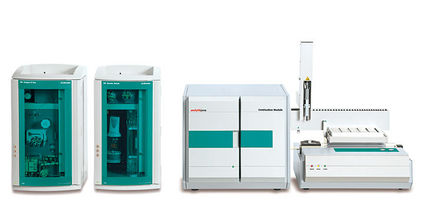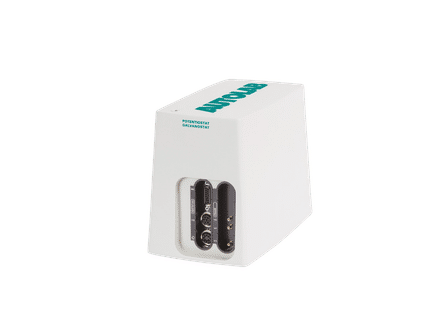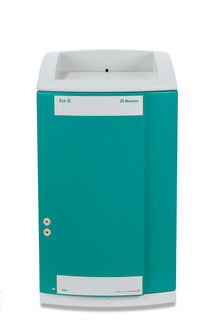- For the plant genus Oligochaeta from the sunflower family (Asteraceae): see Oligochaeta (plant)
|
|
This article or section is in need of attention from an expert on the subject.
WikiProject Animal may be able to help recruit one.
If a more appropriate WikiProject or portal exists, please adjust this template accordingly.
|
| Oligochaeta
|
Earthworm (Lumbricus terrestris)
|
| Scientific classification
|
| Kingdom:
| Animalia
|
| Phylum:
| Annelida
|
| Class:
| Clitellata
|
| Subclass:
| Oligochaeta
|
|
| Orders
|
|
Haplotaxida
Lumbriculida
|
Oligochaeta (singular Oligochaete, pronounced /ˈɒlɪgoʊkiːt/) is a subclass in the biological phylum Annelida and includes various earthworms. Specifically, it contains the terrestrial megadrile earthworms (some of which are semi- or fully aquatic), and freshwater or semi-terrestrial microdrile forms including the tubificids, pot worms and ice worms (Enchytraeidae), blackworms (Lumbriculidae) and several interstitial marine worms.
Oligochaeta means "few-bristled", and these worms usually have few setae (chaetae) or "bristles", and lack a parapodia, unlike polychaeta.
Common characteristics
Oligochaeta are well-segmented annelids and most have a spacious body cavity (coelom) that is used as a hydroskeleton. Their length ranges from a few centimetres up to 2-3 metres such as the Australian native giant Gippsland earthworm. Unlike Polychaetes, Oligochaetes do not have parapodia (appendages used for locomotion) or sensory appendages on their prostomium (the most anterior segment of the head). Oligochaetes have four bundles of chaete per segment (two lateral, one lateroventral, and one dorsoventral). Each bundle of chaete consists of 1 to 25 individual chaete. The Oligochaetes can extend or retract their chaete by protractor and retractor muscles. Generally, when the longitudinal muscles of the worm are contracted, the chaete are retracted, and when the circular muscles are contracted, the chaete are extended. Chaete action permits grasping of soil during peristaltic burrowing.
Most Oligochaetes are detritus feeders, some genera are predaceous e.g. (Agriodrilus and Phagodrilus).
Life cycle
Earthworms are hermaphrodites, which means that each animal has both male and female reproductive organs. They have external fertilization (except for some members of the African family Eudrilidae), but copulate and store sperm in a receptacle called a spermatheca. Like leeches, they have a clitellum which secretes a "cocoon" or capsule into which both eggs and sperm are deposited and acts as an incubator for the embryonic worms. The cocoon is deposited in the soil. On hatching, the young worms resemble small adults and grow continually until they reach maturity. They lack a trochophore larval stage.
Native earthworm species are often eradicated from natural areas as people clear native vegetation and introduced species become more dominant in these disturbed habitats. Introduced earthworms are most common in disturbed environments such as suburban gardens and farmland paddocks.
Families
The following list of Oligochaeta families follows ICZN convention so that family-group name (ending in -idae) is followed by authorship and date.
- Randiellidae Erséus & Strehlow, 1986
- Tubificidae Vejdovsky, 1884 (including Naidinae Ehrenberg, 1831)
- Narapidae Righi, 1983
- Opistocystidae, Cernosvitov 1936
- Dorydrilidae Cook, 1971
- Parvidrilidae Erséus, 1999
- Phreodrilidae Beddard, 1891
- Propappidae Coates, 1986
- Haplotaxidae Michaelsen, 1900
- Tiguassuidae Brinkhurst, 1988
- Lumbriculidae Vejdovsky, 1884
- Enchytraeidae Vejdovsky, 1879
- Moniligastridae Claus, 1880
- Alluroididae Michaelsen, 1900
- Syngenodrilidae Smith and Green, 1919
- Glossoscolecidae Michaelsen, 1900
- Tumakidae Righi, 1995
- Ailoscolecidae Bouché, 1969 (including Komarekionidae Gates, 1974)
- Sparganophilidae Michaelsen, 1918
- Microchaetidae Michaelsen, 1900
- Lumbricidae Claus, 1876 (including Diporodrilinae Bouché, 1970; Eiseniinae Omodeo, 1956; Spermophorodrilinae Omodeo & Rota, 1989; Postandrilinae Qiu & Bouché, 1998; Allolobophorinae Kvavadze, 2000 and Helodrilinae Kvavadze, 2000)
- Kynotidae - Brinkhurst & Jamieson, 1971
- Hormogastridae Michaelsen, 1900 (including Vignysinae Bouché, 1970 and Xaninae Diaz Cosin et al., 1989)
- Lutodrilidae McMahan, 1978
- Criodrilidae Vejdovsky, 1884 (including Biwadrilidae Brinkhurst & Jamieson, 1971)
- Almidae Duboscq, 1902
- Ocnerodrilidae Beddard, 1891 (including Malabariinae Gates, 1966)
- Acanthodrilidae Claus, 1880 (including Diplocardiinae Michaelsen, 1900)
- Octochaetidae Michaelsen, 1900 (including Benhamiinae Michaelsen, 1895/7)
- Exxidae Blakemore, 2000
- Megascolecidae Rosa, 1891 (including Pontodrilinae Vejdovsky, 1884; Plutellinae Vejdovsky, 1884 and Argilophilinae Fender & McKey-Fender, 1990)
- Eudrilidae Claus, 1880.
Bibliography
- Blakemore, R.J. (2005). Whither Octochaetidae? – its family status reviewed. In: Advances in Earthworm Taxonomy II. Eds. A.A. & V.V. Pop. Proceedings IOTM2, Cluj University Press. Romania. Pp. 63-84. http://www.oligochaeta.org/ITOM2/IOTM2.htm.
- Blakemore, R.J. (2006). Revised Key to Earthworm Families (Ch. 9). In: A Series of Searchable Texts on Earthworm Biodiversity, Ecology and Systematics from Various Regions of the World – 2nd Edition (2006). Eds.: N. Kaneko & M.T. Ito. COE Soil Ecology Research Group, Yokohama National University, Japan. CD-ROM Publication. Website: http://bio-eco.eis.ynu.ac.jp/eng/database/earthworm/.
- Erséus, C. and Källersjö, M. (2003). 18S rDNA phylogeny of basal groups of Clitellata (Annelida). Zoologica Scripta: 33(2): 187-196.
- Jamieson, B.G.M., Tillier, S., Tillier, A., Justine, J.-L., Ling, E., James, S., McDonald, K. and Hugall, A.F. (2002). Phylogeny of the Megascolecidae and Crassiclitellata (Annelida, Oligochaeta): combined versus partitioned analysis using nuclear (28S) and mitochondrial(12S, 16S) rDNA. Zoosystema 24(4): 707-734.
- Michaelsen, W. (1900). Das Tierreich 10: Vermes, Oligochaeta. Friedländer & Sohn, Berlin. Pp. xxix+575, figs. 1-13. Online here: http://mail2web.com/cgi-bin/redir.asp?lid=0&newsite=http://www.archive.org/details/oligochaeta10mich.
- Siddall, M.E., Apakupakul, K, Burreson, E. M., Coates, K. A., Erséus, C, Gelder, S. R., Källersjö, M, & Trapido-Rosenthal, H. (2001). Validating Livanow's Hypothesis: Molecular Data Agree that Leeches, Branchiobdellidans and Acanthobdella peledina form a Monophyletic Group of Oligochaetes. Molecular Phylogenetics and Evolution, 21: 346-351. http://research.amnh.org/~siddall/pub/livanow.pdf.
- Stephenson, J. (1930). The Oligochaeta. Clarendon Press, Oxford. Pp. 978.
|







